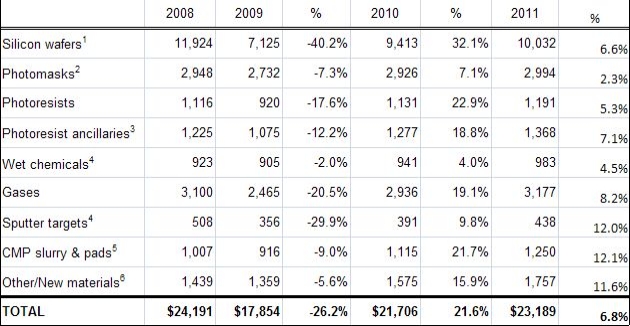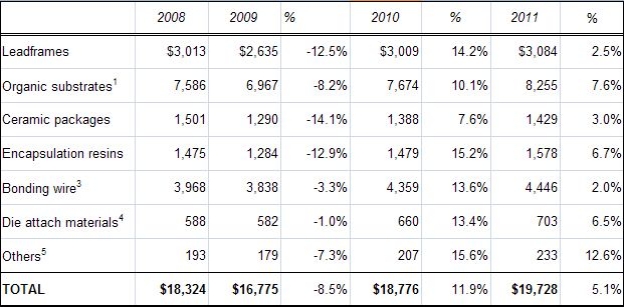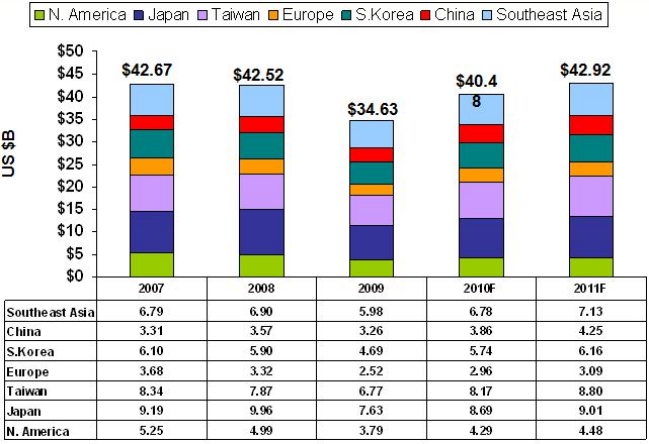(July 21, 2010) — The Institute of Microelectronics (IME), a research institute of the Agency for Science, Technology and Research (A*STAR), announced a collaborative partnership with Stanford University to develop silicon-nanowire-based circuits that are inspired by the brain. Under the research collaborative agreement, IME and Stanford will jointly develop silicon nanowire based neuromorphic computational elements (silicon neurons) that take advantage of the capabilities of nanowire technology.
The quest to come up with an artificial system organized like the biological nervous system promises to drive the future of humanoid robots and supercomputers that can perform highly complex decision-making for gaming and defense technologies. The electronics systems using neuromorphic designs aim to work like the biological nervous system. The collaboration represents a further expansion of the extensive neuromorphic computing activities at Stanford University and provides a new application opportunity for nanowire transistors developed at IME.
The partnership leverages on the relative strengths of the respective institute. IME is a leading laboratory in the fabrication of nanowire transistors, with considerable progress reported in recent years, including the demonstration of functional circuits. Stanford University has a leading group in neuromorphic engineering, an approach to designing systems that work like the brain.
The joint project will be led by Dr Navab Singh, Principal Investigator of the NanoElectronics section at IME, and Associate Professor Kwabena Boahen, Director of the Brains In Silicon group at Stanford University. The project will tap Stanford University’s expertise in neuromorphic design to model and design silicon neuron circuits. The circuits will be fabricated by IME using state-of-the-art nanowire technology, more specifically, the lateral gate-all-around FUSI gate transistor technology.
“The gate all around (GAA) transistors based on silicon nanowires are considered the most promising alternatives to scaling limitations of planar CMOS technology — foundation of today’s electronics. Nanowire transistors offer near ideal subthreshold behaviour, low off state leakage, and high drive current — all the characteristics required to enable a highly integrated design that works with little power, much like the real brain. On the other hand, due to nanowire’s structure and strong response in respect to tiny change in dimension, nanowire transistors also exhibit increased variability, strong low frequency and telegraph-style noise that are interesting to niche applications,” said Dr Singh.
On the unique characteristics of nanowire transistors, Associate Professor Boahen said, “Our joint mission is to develop revolutionary architectures that would be tolerant to, or better yet, thrive under the variability and noise. Interestingly, variability and noise are key elements of a biological brain.”
Professor Dim-Lee Kwong, executive director of IME, said, “IME’s alliance with Stanford University to develop neuromorphic test circuits will be a window to the future of an emerging discipline that is expected to have a ripple effect on a broad spectrum of industries.”
The Institute of Microelectronics (IME) is a research institute of the Science and Engineering Research Council of the Agency for Science, Technology and Research (A*STAR) of Singapore. A*STAR oversees 14 biomedical sciences, and physical sciences and engineering research institutes, and seven consortia & centre, which are located in Biopolis and Fusionopolis, as well as their immediate vicinity. For more information about A*STAR, visit www.a-star.edu.sg
Also read:
Fully gate-all-around silicon nanowire CMOS devices
Although CVD-grown nanowires are good for demonstration purposes, getting them into manufacturing calls for the utilization of CMOS fabrication methods … (Solid State Technology, 2008, Volume 51, Issue 5, co-authored by Dr. Navab Singh and Professor Dim-Lee Kwong)
Toshiba tips Si nanowires for 16nm chips
Presenting at the VLSI Symposium, Toshiba says it has developed a silicon nanowire transistor with vastly improved on-current levels, targeting 16nm and beyond system LSIs … (Small Times, 2010, online issue)







